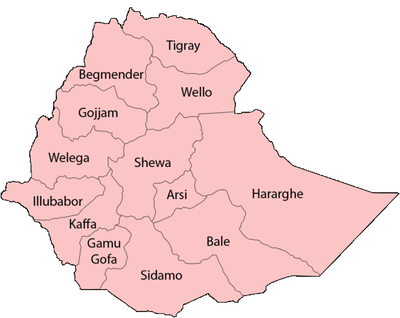Barentu Oromo people
| Regions with significant populations | |
|---|---|
| Ethiopia | |
| Languages | |
| Oromo | |
| Religion | |
| Islam, Ethiopian Orthodox Christianity, Protestantism | |
| Related ethnic groups | |
| Oromo, Borana and other Cushitic peoples. |
Barentu people, also called Barentoo or Baraytuma, are one of the two main groups of the Oromo people in Oromia.[1][2] They historically expanded towards east, southeast and northeast Ethiopia, while the other moiety named Borana Oromo people expanded west, northwest and southwards.[3]
Demography
Between the twelfth and fifteenth centuries, the Oromo people had differentiated into two major confederation of pastoral tribes: the Borana and the Barentu, and several minor ones. The Barentu people thereafter expanded to the eastern regions now called Hararghe, Arsi, Wello and northeastern Shawa. The Borana people, empowered by their Gadda political and military organization expanded in the other directions, regions now called western Shawa, Welega, Illubabor, Kaffa, Gamu Goffa, Sidamo and in the 16th-century into what is now northern Kenya regions.[3] The Borana and Barentu groups are sometimes referred to as two early era moieties of the Oromo people.[4]
Religion

The Barentu Oromo people in Arsi, Bale and Hararghe regions abandoned their traditional religions and the Gadda system of governance in the 19th century, when they were converted to Islam.[5] In eastern regions close to Somalia, about 98.5% of the Barentu people now follow Islam. They are geographically closest to the Afar people from the Afar Region, who were the two first ethnic groups to accept Islam in Africa.
Some people away from Somalia border, in the Arsi Zone and the Bale Zone follow the traditional Oromo religion which is called Aadha, whose god is Waaq. People who follow Waaqa are often from the Borana Oromo people.
Sub groups
The Barento/Barentuma consist of the following sections or subgroups, which in turn include many subdivisions:
- The Wallo Oromo, who are the northernmost group, and live predominantly in the Oromia Zone of the Amhara Region, as far north as Lake Ashenge, with. whom the Raya Oromo and the Yejju Oromo are often grouped;
- The Ittu Oromo, who live in the Oromia Region from the Awash River east to a line drawn south of Dire Dawa;
- The Karayu Oromo, who live along the Awash valley in East Shawa as well as West Hararge
- The Aniya Oromo, who live south of the Ittu and west of the Erer River;
- The Afran Qallo which refer to the 4 decedents of Qallo, which are:
- Ala Oromo, living west of the city of Harar and the Erer River
- Oborra Oromo, living between the Ittu and Ala Oromo
- Babille Oromo,living east of the Erer River in the Oromia Region
- Dagaa Oromo (Huumee,Nole and Jarso):
- (Huumee - Mana Hiyyoo and Bursuug) who live between Laaftoo and Faafam rivers-the capital is Fuunyaan biiraa (Gursum);
- Nole Oromo who live east of Dire Dawa and north of Harar;
- Jarso who live in the northeastern corner of the Oromia Region;
- The Arsi Oromo, who primarily live in the Arsi Zone of the Oromia Region as well as the Bale Zone; and
- The Qallu, who live between the Awash River and Dire Dawa.
- The Sherifa, who live between the Awash River and Dire Dawa East Hararge Babile Deder Gursum and West Hararge Gelemso
References
- ↑ Asafa Jalata (2004). State Crises, Globalisation, and National Movements in North-east Africa. Routledge. pp. 105–107. ISBN 978-0-415-34810-2.
- ↑ Mohammed Hassen (2015). The Oromo and the Christian Kingdom of Ethiopia: 1300-1700. Boydell & Brewer. p. 109. ISBN 978-1-84701-117-6.
- 1 2 Asafa Jalata (2010), Oromo Peoplehood: Historical and Cultural Overview, Sociology, University of Tennessee Press, pages 5, 11-12
- ↑ Abbas Gnamo (2014). Conquest and Resistance in the Ethiopian Empire, 1880 -1974: The Case of the Arsi Oromo. BRILL Academic. pp. 77–79. ISBN 978-90-04-26548-6.
- ↑ Asafa Jalata (2004). State Crises, Globalisation, and National Movements in North-east Africa. Routledge. pp. 112–113. ISBN 978-0-415-34810-2.